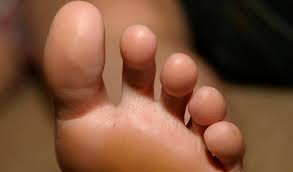Foot pain, especially around the big toe, can be a nuisance and affect your daily activities. Whether you're an athlete, a busy professional, or someone who loves to stay active, understanding how to prevent foot pain is crucial. In this article, we'll delve into what causes pain around your big toe and explore preventive measures to keep your feet healthy and pain-free.
 Understanding Foot Pain Around the Big Toe
Understanding Foot Pain Around the Big Toe
Foot pain around the big toe often stems from a condition known as metatarsalgia. This term refers to pain and inflammation in the ball of your foot, specifically the area under the big toe. Metatarsalgia can cause a sharp, aching, or burning pain in the ball of the foot, which may intensify with physical activity.
What is Metatarsalgia?
Metatarsalgia is a condition that affects the metatarsal bones—the long bones in your foot that connect to your toes. The pain usually arises due to excessive pressure on the ball of the foot. This can be caused by wearing improper footwear, high-impact activities, or certain foot shapes and structures.
Common Causes of Foot Pain
Several factors can contribute to foot pain around the big toe, including:
Improper Footwear
Wearing shoes that don't fit well or lack proper support can significantly contribute to foot pain. High heels, narrow shoes, or shoes with a small toe box can compress your toes and add unnecessary pressure to the ball of your foot.
High-Impact Activities
Athletes or individuals engaging in high-impact sports like running or jumping are more susceptible to metatarsal pain. The repeated stress and pressure on the ball of the foot can lead to inflammation and discomfort.
Foot Structure
Certain foot shapes, such as high arches or flat feet, can predispose individuals to metatarsalgia. These conditions alter the distribution of weight across the foot, increasing pressure on the metatarsal bones.
 Overweight
Overweight
Excess body weight can increase the load on your feet, particularly on the ball of the foot. This added pressure can lead to discomfort and long-term pain.
Symptoms of Metatarsalgia
Recognising the symptoms of metatarsalgia is crucial for early intervention. Common symptoms include:
-
Sharp or burning pain in the ball of the foot
-
Pain that worsens with activity and improves with rest
-
Tingling or numbness in the toes
-
Swelling or inflammation in the ball of the foot
-
Feeling like there's a pebble in your shoe
Preventive Measures
Preventing foot pain, especially around the big toe, involves a combination of lifestyle changes and proper footwear choices. Here are some effective strategies:
Choose the Right Footwear
Selecting shoes that provide adequate support and a wide toe box is essential. Look for shoes with cushioning in the forefoot and good arch support. Avoid high heels or shoes that are too tight, as they can exacerbate foot pain.
Use Orthotics
Inserts or custom orthotics can help distribute pressure evenly across your foot, reducing the strain on the metatarsal bones. Consult with a podiatrist to determine if orthotics are suitable for your needs.
Maintain a Healthy Weight
Keeping your weight in check can reduce the pressure on your feet, helping to prevent metatarsal pain. Aim for a balanced diet and regular exercise to maintain a healthy weight.
Strengthening Exercises
Incorporating foot and leg exercises into your routine can strengthen the muscles around your feet, providing better support and reducing the risk of pain. Simple exercises like toe stretches, calf raises, and ankle circles can be beneficial.
Rest and Ice
If you experience foot pain, rest your feet and apply ice to the affected area. This can help reduce inflammation and alleviate discomfort. Avoid activities that exacerbate the pain until your symptoms improve.
When to See a Doctor
While preventive measures can be effective, it's important to consult a healthcare professional if your foot pain persists or worsens. A doctor or podiatrist can assess your condition, provide a proper diagnosis, and recommend further treatment options if needed.
Conclusion
Preventing foot pain around the big toe requires a proactive approach. By understanding the causes and symptoms of metatarsalgia, choosing appropriate footwear, maintaining a healthy weight, and incorporating strengthening exercises into your routine, you can protect your feet and enjoy a pain-free lifestyle. Remember, if you experience persistent pain, consult with a healthcare professional to address your concerns and ensure optimal foot health.








